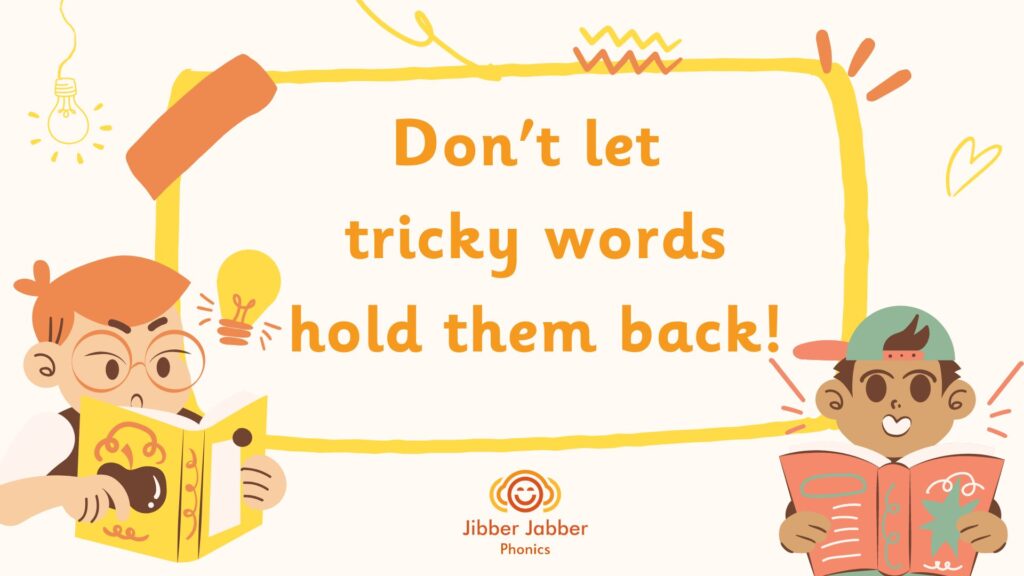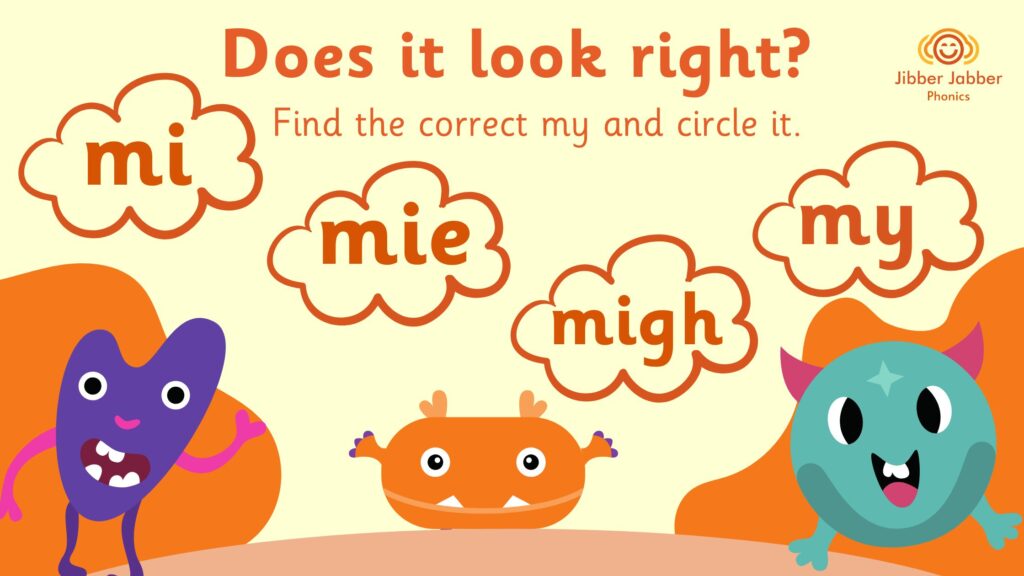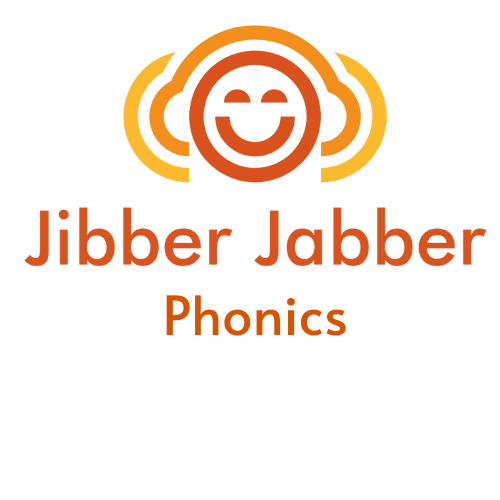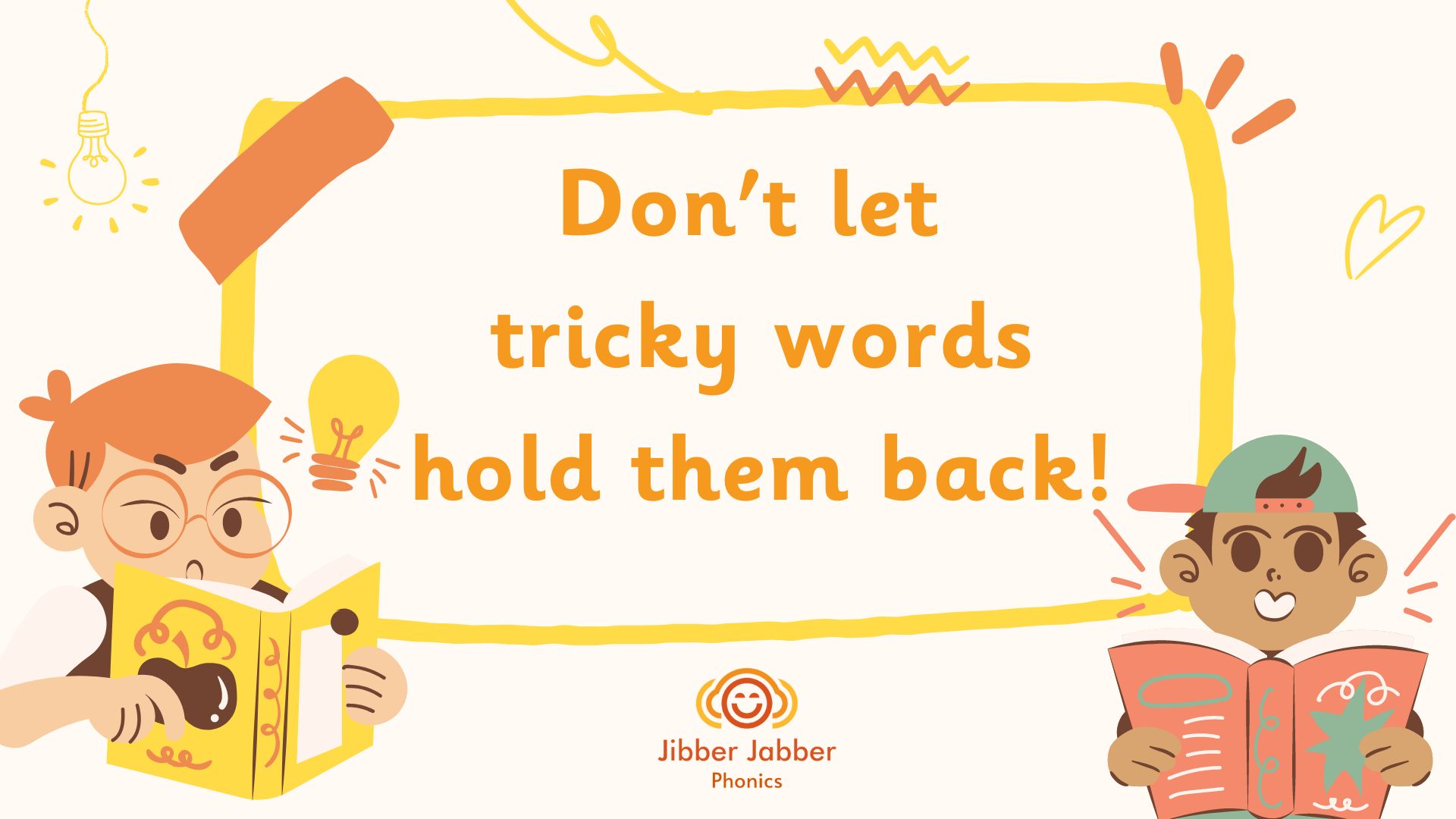Do you use these phrases when you are challenging learners to read and write words?
- Find the sound in a word!
- Sound it out!
- Use your letter sounds!
- Decode it!
- Use an alternative sound!
I use them all the time with learners once they know the 44 letter sounds of English. This is how we explore reading a writing together with young and older learners. I tell them ‘this will work’. I tell them ‘you can do this!’ I tell them to ‘listen to the sounds’. I tell them to ‘trust me’.
Then “BOOM!” They see the word ‘he’, ‘was’, ‘to’, ‘are’, ‘all’, ‘said’ and they sound it out, decode it, think of an alternative and suddenly it all goes weird! Their trust in me is not looking so solid and their brow starts to furrow. What have I done to their confident world of reading!
I have sent them to the challenging world of Tricky Words and asked them to find another solution to reading and writing these words. The thing is, there are not that many in the grand scheme of the English vocabulary.

In the Jolly Phonics programme there are 72 tricky words to start with. The big thing is that they are words that they use often and early on in their English reading and writing learning journey.
72 tricky words is small in comparison to how many words they can read and spell after 44 letter sounds. Studies show that when a child learns their first 10 letter sounds there are 350 three sound words, 4,320 four sound words and 21,460 five sound words they can write. That is with only the first 10 letter sounds learnt! That is a lot of words!
Don’t let tricky words hold them back!
Tricky words are taught once all the letter sounds have been mastered. Therefore, tricky words are not tricky to a learner that is not aware of the correct pronunciation.
Learning tricky words is challenging! As with many aspects of the English language, there really aren’t many rules that aren’t broken.
For learners with a good visual memory, tricky words can be easy for them. Others will need more support. Here are 8 tried and tested methods that I use in my classroom.
1. Tricky Word Wall
Create a tricky word wall and display them as much as possible. Once everyone knows the tricky word it can come off the display.
2. Does it look or sound right
Have the kids write the words different ways and use visual skills to see which one looks correct. For tricky words that have alternative vowel spellings this is great practice. Lets look at ‘my’. They could see these options mie, migh, mi and my. All of them sound out the correct word but ask them “Which one looks right?”

3. Say it as it sounds!
Use all the letter sounds in the word then decide which ones are not used. Wednesday is one I use often. We say wenzdai but we spell it Wed Nes Day. When it comes to the middle of the week I hear /wen nes day/ a lot in my class.
4. Word Families and Patterns
Teach tricky words by supporting learners with the parts of the word that are not tricky and then encourage them to remember the tricky part.
Many words have word patterns. This is where a particular group of letters often appear together to form the same sound in a word. Only a few letters change to make a different word. Recognising patterns in words makes them less tricky.
Let’s look at the word ‘she’.
Learners will know the /sh/ sound, it’s the final letter sound that is irregular, the /e/ is the long vowel sound /ee/. It’s also in the words ‘me’, ‘we’, ‘be’ and ‘he’. That’s five tricky words that have the same pattern and are not tricky anymore!
Teaching common rules like this will help.
5. look, copy, cover, write, check
Practicing with this five-stage activity is also helpful. Kids do exactly what this says. First, they look at the word and start to think about the tricky bit. Then they copy he word also identifying the tricky bit. Covering the word uses their memory when they next come to write it. Finally, they uncover the word and check they have got it correct. Great for self-assessment or mini teacher working.

6. Actions
Give each tricky word an action. I use pointing for ‘you’, stroke my hair for ‘she’ and point to myself for ‘I’. Giving tricky words actions makes them multi sensory and you can silently assist them when they are writing. You can create your own actions with things that are relevant for you. Click here to watch an explanation on my YouTube channel.
7. Gamify
Getting kids up and moving in the class makes things fun and when they are having fun they are learning, and this makes it memorable.
Combining the games with spelling rules doubles the productivity of the game. Here are some to try.
Spot the Tricky Bit. Kids really enjoy being detectives and finding the irregular parts in words.
Hopscotch. Instead of having numbers on the places to jump, write the tricky word.
Colouring pages. Using colouring sheets is a mindful way to assess children’s reading and fluency skills. A colourful and fun way to help children progress with tricky words. Great for classroom displays too.

Snap. The aim of this game is to win all the cards in the game. A great game that can be played in pairs or groups and fast or slow. You will need two sets of the tricky words that they have learnt. Share them out between the players. The first player turns up a card, the next player turns over their card on top of the first one. When that matches with a card already face up on the pile, the first person to notice the two matched cards calls out “Snap!” and wins the pile. This player adds the cards to the bottom of their face-down pile. The game ends when all the cards have been collected by one player.
8. Mnemonics
Mnemonics are when each letter of a phrase is the next letter in the word. Memory is essential for learning and the brain stores and retrieves memories. There are two reasons why mnemonics are great for this.
First, they enable students to store information in their long-term memory. Secondly, they enable students to retrieve information from their long-term memory.
These strengthen the memory and are a handy and fun technique to remember how tricky words are spelt. A popular one for spelling ‘said’ is ‘Small ants in danger’. I make them visual as well to support multi-sensory learning.

It is worth remembering that mnemonics do have their limitations and should be used sparingly. Creating long complicated phrases could mean they become confusing and have the opposite effect. Mine are short, simple and relevant to the word where possible.
Mostly, don’t be scared that learners won’t get it! Never underestimate the ability of your learners. If they can say Tyrannosaurus Rex they can say and spell anything!!
If you liked this blog, please leave a comment below and let others know where to find this if it has helped you.
For more information about phonics, have a look through my other blogs too. I also have a YouTube channel that has some great tips and trick for the learning process.


0 Comments